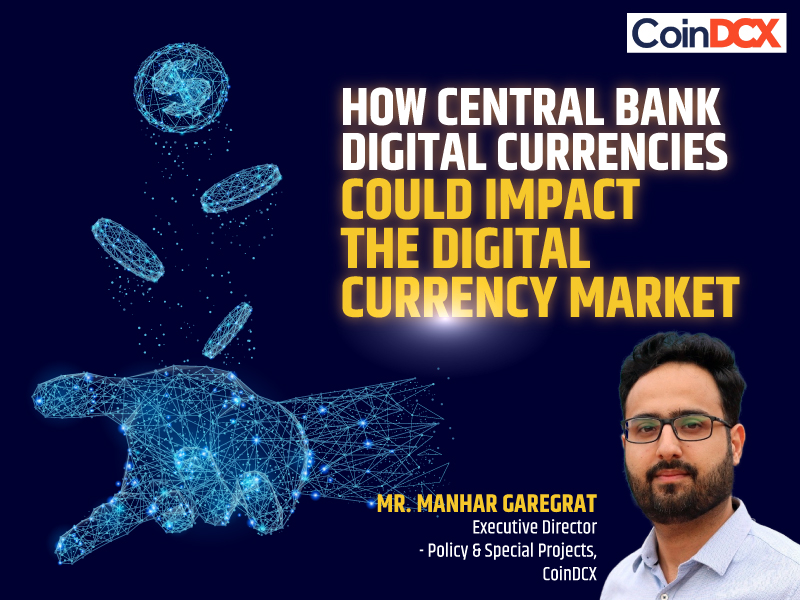Collective disruption: How today's metaverse is shaping tomorrow's finance
By Sumit Gupta, CEO & Co-Founder of CoinDCX explains
By Brand Connect
 The digital evolution accelerating the rise of the metaverse is already having an impact across all sectors from food to fashion, but none more than finance. The move from the centralised, platform-dominant Web2 into the decentralised architecture of Web3 is changing the way fintech is designed and used. Not only will innovation become increasingly rapid, but it will be driven from the bottom up, resulting in financial tools focused on enabling all aspects of our digital lives.
The digital evolution accelerating the rise of the metaverse is already having an impact across all sectors from food to fashion, but none more than finance. The move from the centralised, platform-dominant Web2 into the decentralised architecture of Web3 is changing the way fintech is designed and used. Not only will innovation become increasingly rapid, but it will be driven from the bottom up, resulting in financial tools focused on enabling all aspects of our digital lives.
Fascination around the metaverse has gained significant attention thanks to various high-profile announcements such as Facebook’s rebrand to Meta and Bill Gates’ belief that we will soon be working from the metaverse. Yet despite the recent fanfare, Big Tech is following the direction set by crypto innovators into the metaverse,, not leading them. It’s not just the traditional outfits who have got into the game but a growing clutch of agile disruptors and investors in the virtual realm, steering the future of finance.
Collective Disruption
As nascent as the fintech industry seems to be, its origins go all the way back to inventions such as the credit card in the 1950s. However, until now, financial innovations have largely been the product of the main institutional players, like banks and governments. Banking has indeed become more accessible to the masses across the world but within the parameters defined by the institutions that benefit them in cementing market share.
Web3 has changed this dynamic as decentralisation benefits individuals over platforms. While the current internet, Web2, relies on centralised data storage and ownership, the metaverse is underpinned by blockchain technology, where information is stored using Distributed Ledger Technology (DLT) across a wide network. DLT is the hallmark of Web3, giving users ownership over their data and removing the reliance on intermediaries, resulting in more efficient and transparent transactions. The potent technology is a shared and trusted ledger that can be inspected by everybody but no single user has the power to amend it.
This infrastructure has spawned rapid fintech innovation. DeFi, crypto assets, , digital wallets and non-fungible tokens (NFTs) are some of the more popular applications that define today’s Web3. In all these cases, traditional financial protocols have been disrupted by decentralised movements to create new use-cases for blockchain technology. These projects have produced fintech that is not only innovative, but increasingly attractive to a wider base of people, thanks to their border utility.
Globally, millions use fintech in their everyday finances and are making the leap into DeFi. People are doing this not just because of government or institutional encouragement, but because of the inherent value of digital assets in an increasingly virtual world. This leap in adoption is not just driven by developed countries but by emerging markets like Vietnam, India and Pakistan, where worldwide crypto usage jumped by over 880% last year.
Seeing the value in the digital asset economy, governments from El Salvador to the UAE are introducing favourable regulations to encourage the growth of crypto and DeFi innovation hubs. Even countries opposed to crypto such as China are opening arms to other forms of digital assets, leading the way in pushing the launch of its digital Yuan ahead of the Lunar New Year.

Catalysing Fintech Adoption
While blockchain has powered the collective drive for fintech innovation, the metaverse will be the catalyst that creates wide-scale adoption. Virtual worlds will crystallise user needs as we translate reality into digital spaces. This aspect of ‘realness’ has the potential to make fintech more inclusive and accessible to digital first users.
We are already witnessing the rapid adoption of digital assets within gaming, as players explore the inherent utility of crypto and NFTs in interconnected virtual worlds. As the lines of finance blur, gamers can play to earn and use digital tokens to make transactions, buy virtual goods and pay for services, introducing new paradigms of value creation. Value generated in the metaverse can be converted into real monetary returns in the real world, converging the physical and virtual realms together. This draws new boundaries of proprietary and custodial ownership and opens doors to fintech adoption to a wider pool of users.
Crucially, the popularity of these digital assets have expanded beyond the domain of gaming and are having a knock-on effect on DeFi and the wider world. Millions of dollars are being poured into DeFi gaming companies like Axie Infinity, which reached a US$3 billion valuation from its latest funding round. As the play-to-earn sector gains ground in a US$37 billion gaming industry, fintech will inadvertently be shaped by the rise of the metaverse.
The Future of Finance
As blockchain powers Web3, the metaverse will enable us to connect, interact and transact in new ways, bringing to life the virtual worlds that have, up until now, only existed in science fiction. Thanks to its decentralised architecture, it will also democratise fintech, putting power in the hands of the many, not the few. However, it is the experiential nature of the metaverse that will truly change finance. Virtual worlds will enable us to create inherent value and drive utility for digital assets. We will move from a world where finance powers transactions, to one where it enables a host of new possibilities.
Key highlights:
- Metaverse is a virtual-reality space where users create their own “avatars” to interact with each other.
- No longer science fiction: Metaverse took off when gaming enthusiasts and crypto geeks started building applications around the concept that dates back to the 1950s when an American science fiction writer introduced it.
- Blockchain, the technology that underpins Metaverse already has made a name for itself through its applications such as NFTs, digital wallets and crypto assets
- Metaverse and blockchain are set to hit the reset button on Fintech as we know it.
- The decentralised nature of Metaverse will democratise finance and put it in the hands of the people instead of a few centralised authorities.
- Value generated in the metaverse, through its applications, can be cashed in the real world with digital money thereby blurring the boundaries between physical and virtual worlds
- Governments and policymakers across the world are writing laws to accommodate the rapidly expanding nature of decentralised finance and crypto assets.



